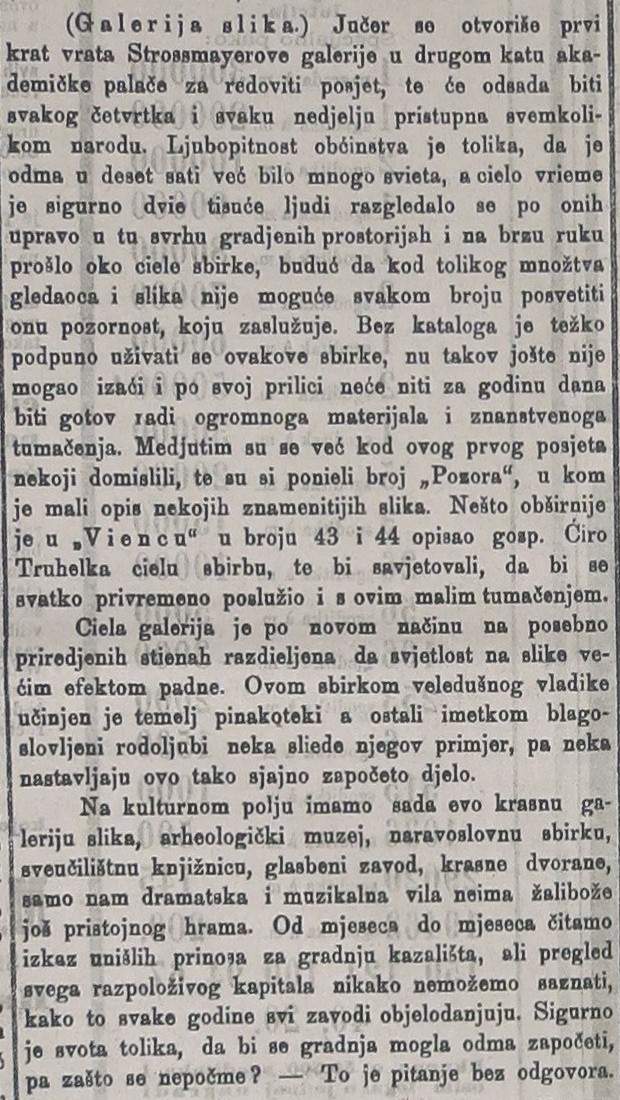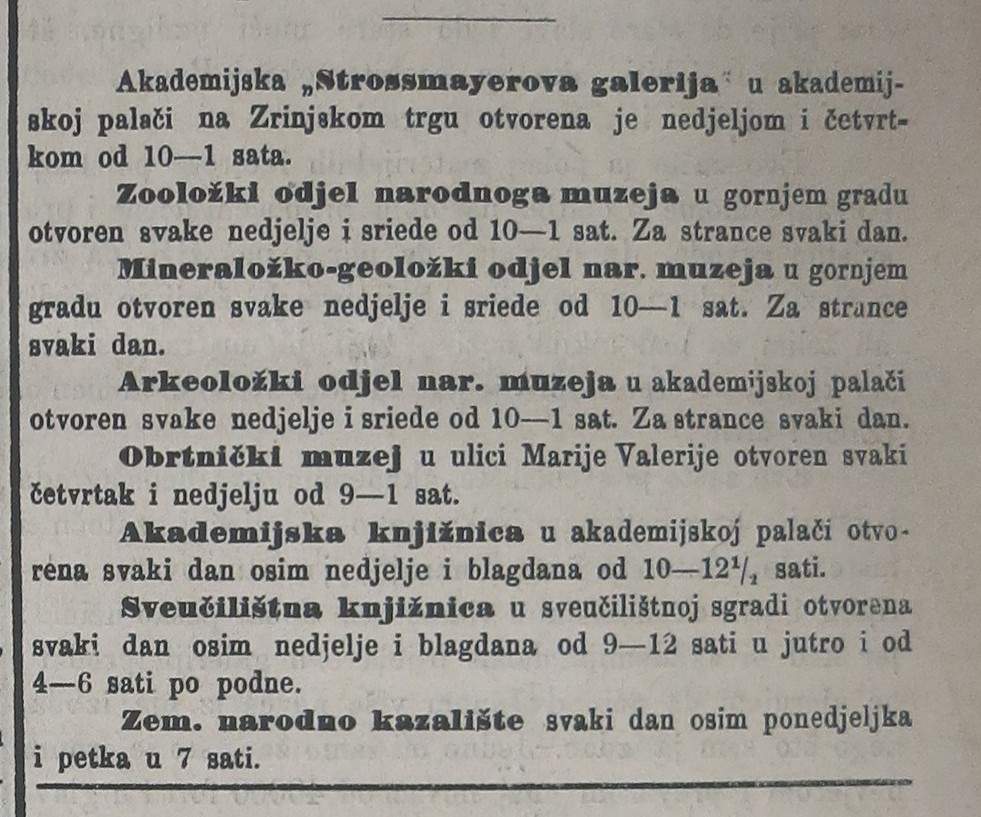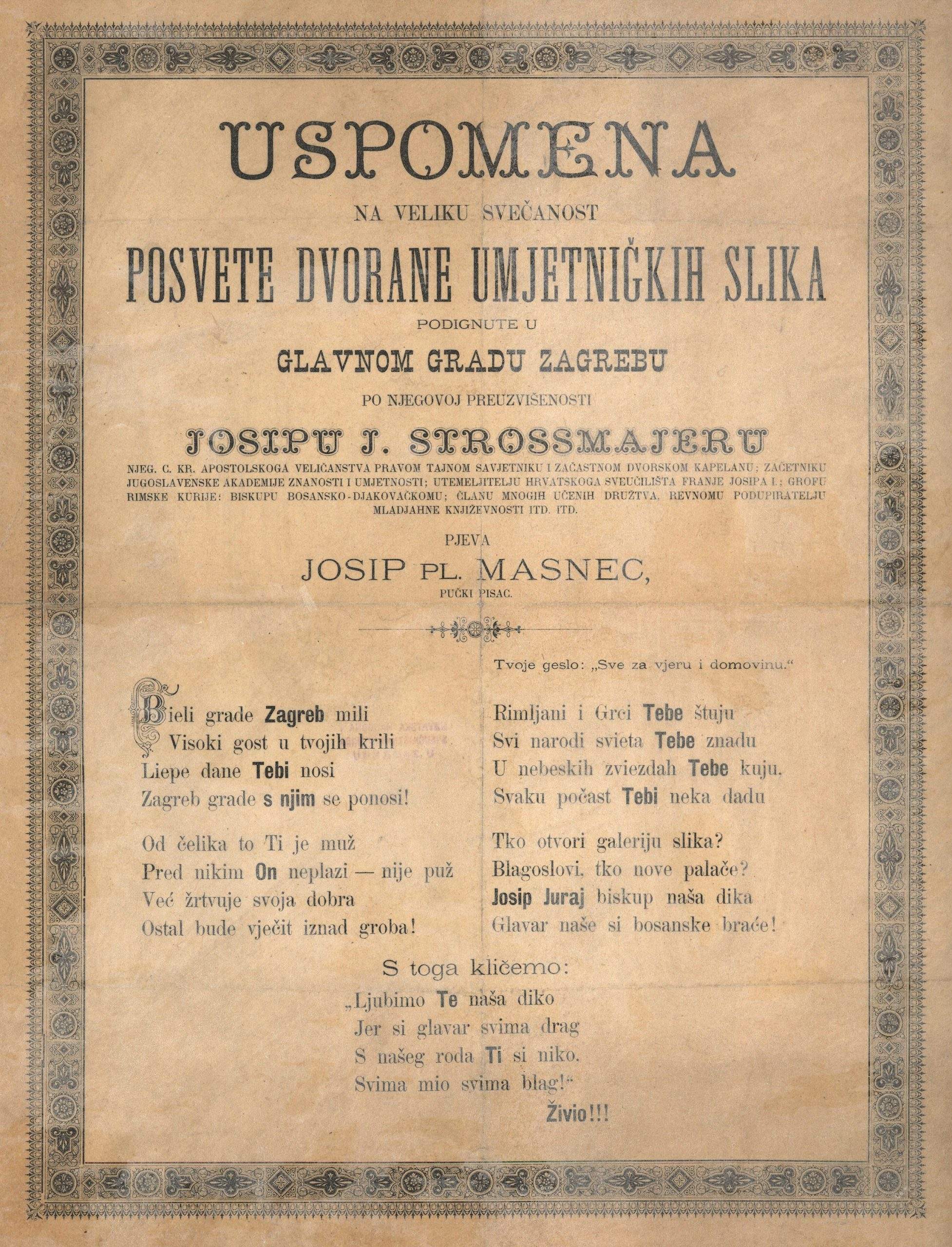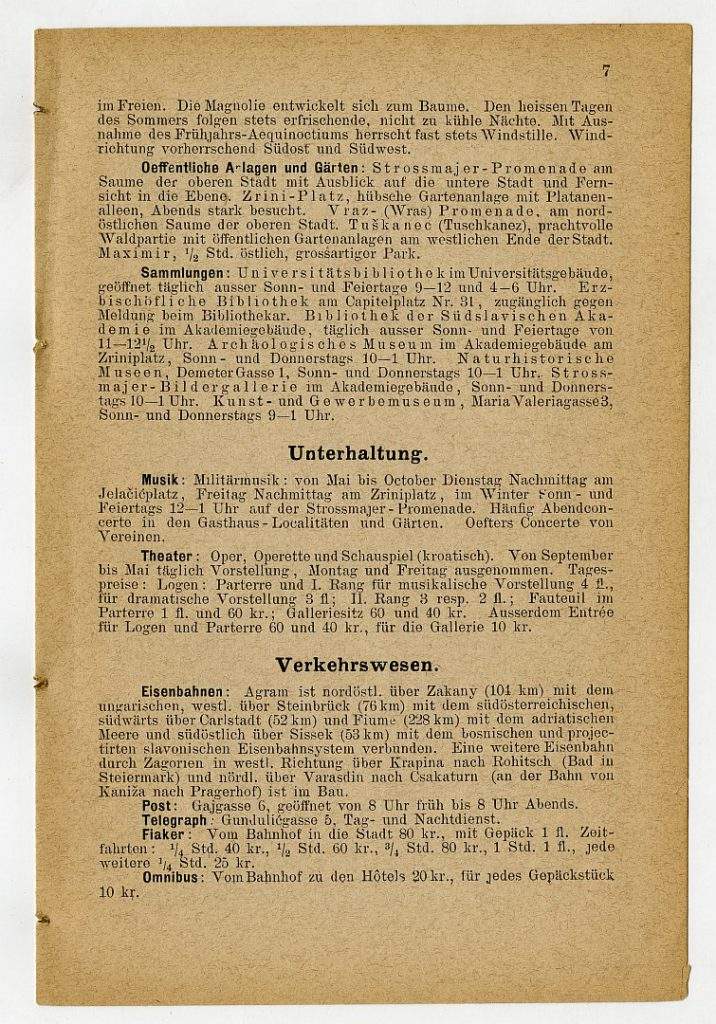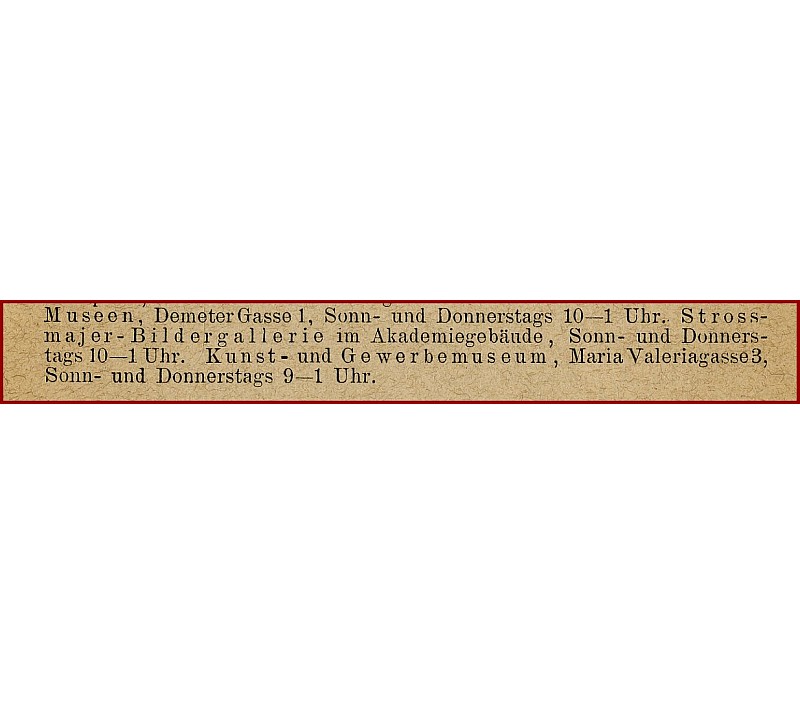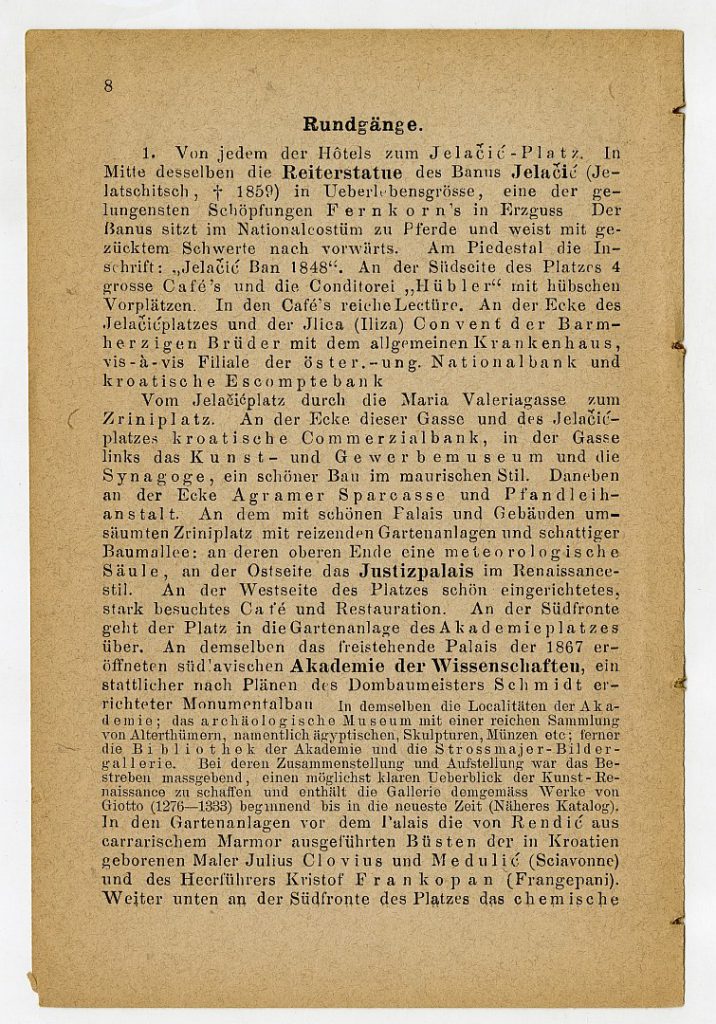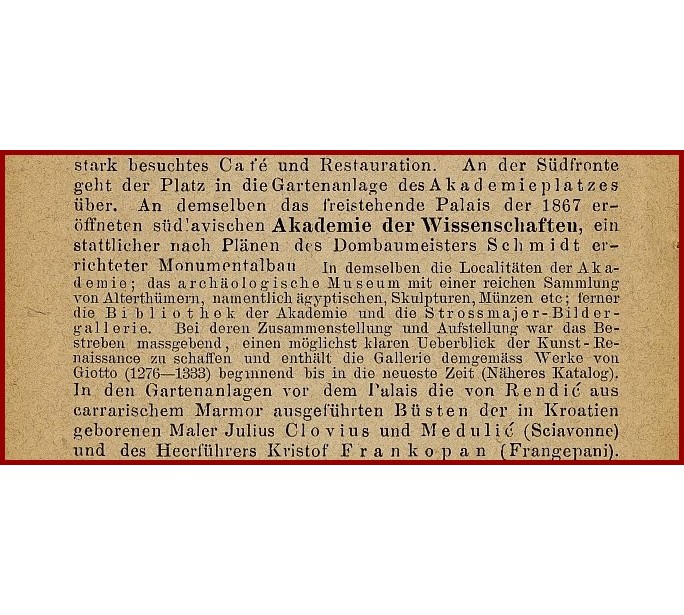Strossmayer remained in Zagreb until 14th November. Apart from receiving many groups and individuals at the Vranyczany palace during that time, he also visited many institutions and societies, the City Council, and several dignitaries. For example, he visited the School of Arts and Crafts and the University, where he was greeted by University President Pilar, along with many professors and “various university students”. In an inspired speech, Pilar lauded the immeasurable achievements that the Bishop made in the field of culture, especially the efforts invested into the founding of the University. The assembly hall roared with the ovations of those gathered, after which the deeply moved guest replied by commending the crowd of students who, honoring him, actually honor the idea of science, art, and cultural evolution, which is a guarantee “that Croatian youth is up to that difficult task which awaits the Croatian people in the future”. Strossmayer finally concluded: “Virtue, moderation, vigilance – all of this is of value, but the greatest ornament of a man is his character and a clear conscience. By steadily believing in God, no man shall ever fail his people.”
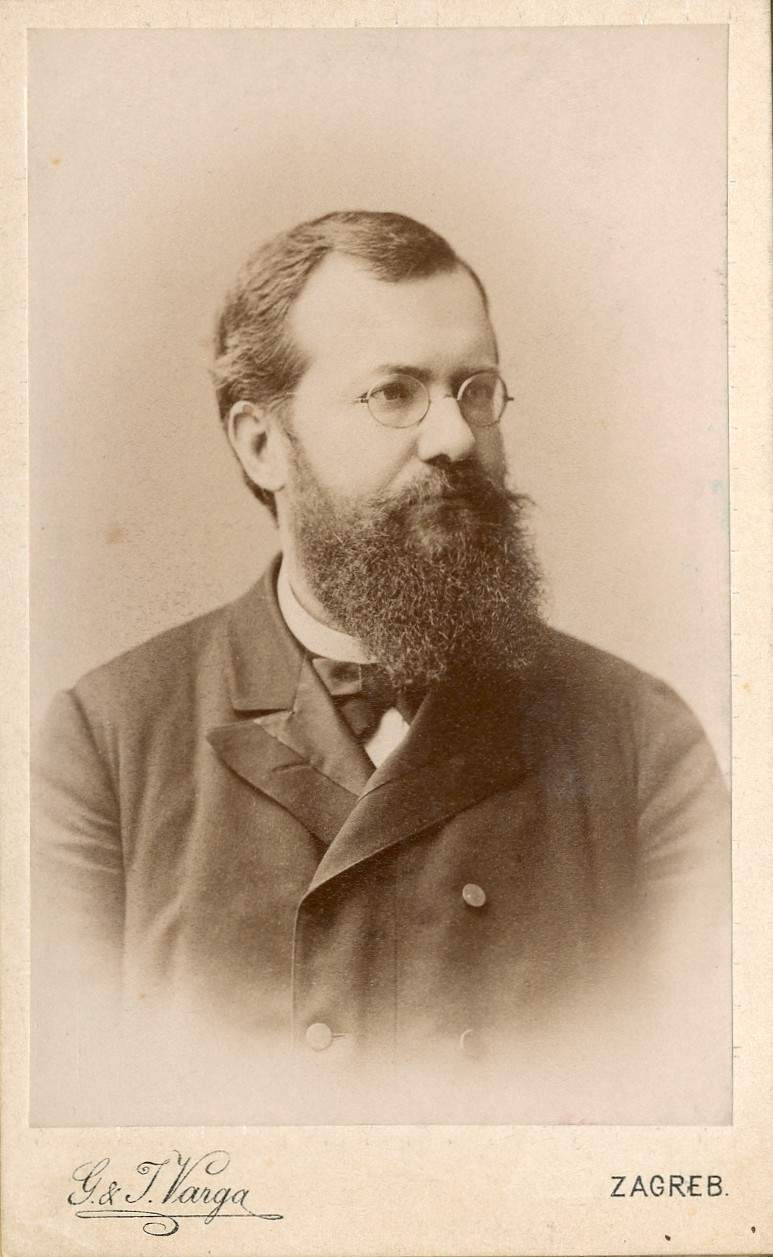
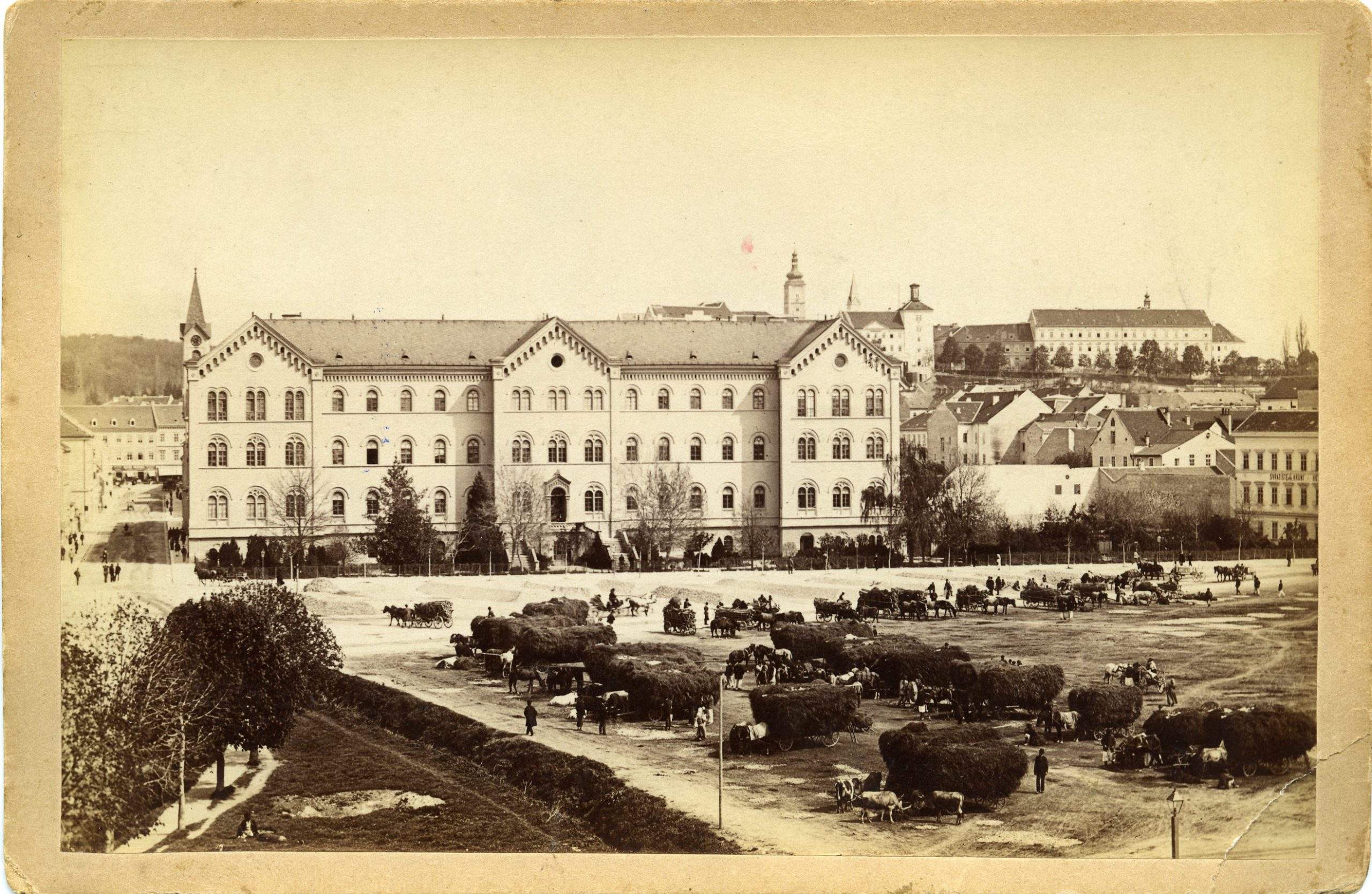
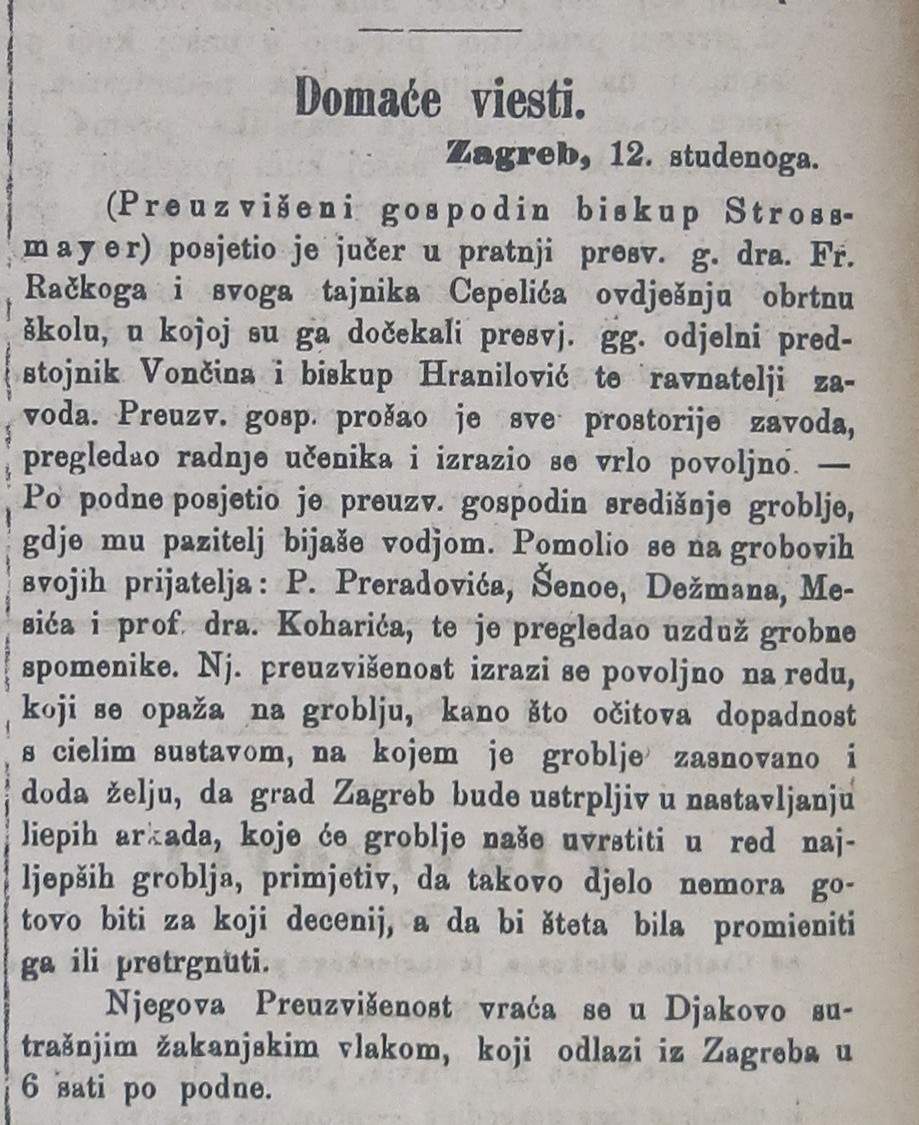
[…] And so the Bishop was welcomed with excitement on his visit to the university, school of crafts, societies Kolo and Sokol, the soup kitchen, the cemetery, and especially when he arrived at the City Council and seminary of Archbishopric.
On November 13th, the Bishop arrived at the City Council, where he was greeted by the City’s representatives, the entire organizing committee and every director that participated in the staging of the celebrations. Deputy Mayor Crnadak, councilman Hudovski, and representative Pogledić met the Bishop at the stairs and escorted him into the hall, where he was joyfully greeted by the guests in ceremonial dress, gathered in the lobby and on the gallery. When the delegation was seated, the Bishop spoke words of gratitude on the fine reception from the head of the table: “Dear sirs! You all have in harmonious unity welcomed my meagre self, and I do not have the words with which to thank you. The Croatian people have even in dire circumstances documented their serious desire for education, which will make Zagreb what glorious Dubrovnik once was in the Balkans. I am sincerely grateful to the City Council and the entire organizing committee for the love that you have shown me”. The Deputy Mayor thanked the Bishop on behalf of the entire city for the honor that he has shown them with his visit.
President M. Smetiško greeted the Bishop at the entrance to the seminary, accompanied by all of the headmasters and professors from the faculty of theology. They all escorted the Bishop through the decorated hallways to the adorned great hall. Here, the President of the seminary welcomed their esteemed guest: “May Your Eminence be assured that the headmasters of this institution, as well as its clerics, greatly value Your significant and grand deeds, which they joyfully acknowledge. They will keep them in grateful memory throughout their lives, exactly as the capital city of our homeland, Croatia. Esteemed Sir! The human intellect enjoys good deeds but is quick to forget their provider. Therefore, let us say that it is possible that our people forget Your kindness; (but) not those wonderful artworks which You have shown them; that building which was created for those people out of love, those bricks will be loyal witnesses of Your gentle love and nobleness. Even when that building is turned to dust, what will remain is the eternal memory of the justice that comforted You in Your difficult service, and which emboldened sustained Your courageous spirit. That eternal justice will one day acknowledge Your deeds in front of the whole world, and we will bow to that eternal crucified justice, begging it with confidence to preserve and bless Your precious life for many more years to come” […]
(from: Josip Juraj Strossmayer Bishop of Bosnia, Đakovo and Srijem 1850 – 1900, 1900-1904)
Strossmayer was solemnly escorted from Zagreb. Around 6 p.m., the ceremonial march of the societies under their insignia, followed by music and thousands of citizens, passed by Vranyczany’s palace, marching towards the railway station. The crowd filled the square in front of the railway building.
[…] Hundreds of lights and colorful lanterns lit the entire space. When the entourage arrived with the Bishop accompanied by Mr. Vojnović, music started to play, but could hardly be heard over the thousand gathered voices that started to cheer “Long live Strossmayer”. At that moment, torchlight in red, white and blue turned the entire spectacle into a magical picture, which became even more wonderful once the pyrotechnical sun shone, and the twirling fireworks started to sprinkle beautiful stars and rockets accompanied by constant popping. […](from: “The departure of His Excellency Bishop J. J. Strossmayer”, Pozor, 15th November 1884)
The Bishop’s acknowledgement ensued, followed by lengthy cheers from those gathered, after which the four societies jointly performed the patriotic songs Živila Hrvatska! and Zrinjsko-Frankopanka. In the waiting room of the first class, Strossmayer, accompanied by his host and his sister-in-law Ivka, were greeted by the City’s representatives, foreign delegations, members of the Academy led by Rački, University professors, many dignitaries, as well as the Bishop’s personal friends and acquaintances. Deputy Mayor Crnadak held an appropriate speech on behalf of the city. He expressed his regret that their esteemed guest had to depart, and the gratitude of the city and the entire Croatian people for all of his good deeds. Followed by inevitable ovations, the Baroness gave the Bishop a bouquet of flowers, at which the passenger passed between two rows of ladies assembled on the platform, and entered the train carriage. Salutations, cheers, and befitting songs lasted for a quarter of an hour. Twelve directors of the ceremony also boarded the train, following Strossmayer until the station in Sesvete, while Crnadak and Pogledić travelled with him to Zákány.
[…] As the train departed, the crowd began to cheer loudly “Long live!”, ladies waving their scarves, gentlemen their hats, accompanied by the sound of the marching band assembled on the platform with the many societies carrying their insignia, and lanterns lined up along the train tracks. The marching band played, and the enthusiasm followed the train until it disappeared into the horizon. […](from: “The departure of His Excellency Bishop J. J. Strossmayer”, Pozor, 15th November 1884)
The procession then set forth for the Vranyczany palace. The Baron gave a short speech from the balcony. The singing societies performed three compositions, after which Ivan Plochberger thanked Vranyczany on behalf of the citizens. The Bishop’s train was welcomed at the stations in Sesvete, Dugo Selo, Vrbovec, Koprivnica, and Osijek with the same commemorative program and enthusiasm. On the day of his departure from Zagreb, the moved Bishop wrote a letter of gratitude to the City’s executive and legislative government, the organizing committee, and all of its citizens.
At his departure, the Esteemed Bishop J. J. Strossmayer sent a farewell letter to the Mayor of Zagreb:
Esteemed Mister Mayor!
At my return home, I cannot but give thanks from all of my heart and soul for the love and honor that the capital city, its honorable leaders, representatives, citizens and common folk have shown me, for my highest aspirations for science, art, and education. I am especially grateful to the committee that organized and led the beautiful ceremony, which we have happily completed. This is strong evidence for the entire world that our capital city understands its mission well, and that it already started to take on the glorious and eternal role of our Dubrovnik, which knew how to raise high the flag of education and freedom at a time when the thick darkness of ignorance and slavery covered the entire Slavic south. These days of overall joy that I have spent in Zagreb will forever remain in my fondest memories. They have awakened in my heart the greatest wish to visit our capital city at least once a year, for the occasion of the ceremonial session of the Academy, if my health will so permit, and to revel in the love and kindness roused by our thirst for knowledge and ability. Therefore, once more I offer my gratitude to the glorious City of Zagreb, its honorable leaders and representatives, all institutions, citizens, and common folk. The bond forged by love, veneration, and gratitude, which ties me to our capital city, will remain eternal. Saying farewell to the city, I hail from the bottom of my heart: Until we meet again.
With special love and regard, I remain to Your Excellency and the entire City, Your most loyal J. J. Strossmayer, Bishop of Bosnia and Srijem. In Zagreb on 14th November 1884
(“Strossmayer to the City of Zagreb”, Pozor, 15th November 1884)
Records of the City Council preserve the information on the cost of all events organized by the City for the festivities: the total amount exceeded 1600 forints.
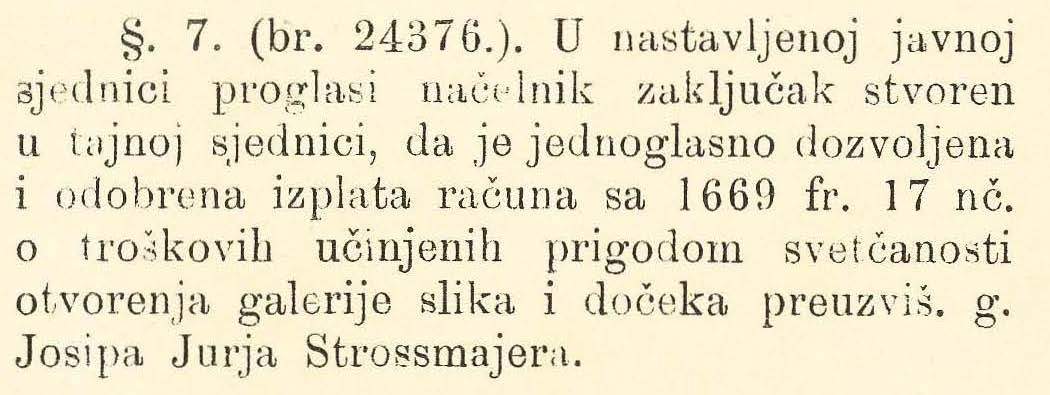
The Academy issued a public statement thanking everyone who participated in any way in the ceremony for the Gallery opening.
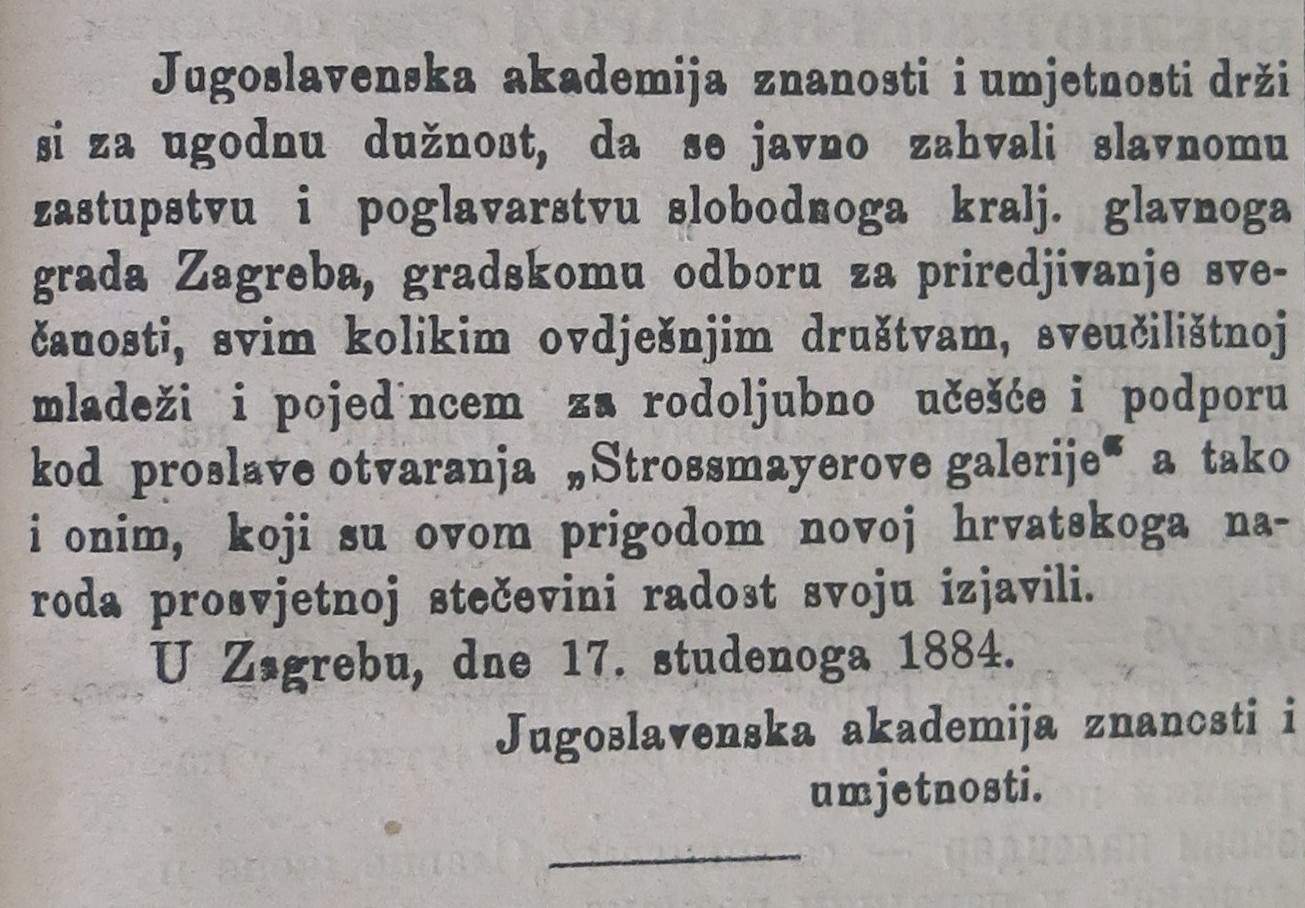
During those days, the Gallery opened its doors to visitors for the first time. Newspapers of the time report: “the whole time there were surely two thousand people walking through the rooms designed specifically for that purpose, quickly touring the entire collection…”. They highlight that, without a catalogue, some individuals brought a copy of Pozor on their first visit “in which there was a small description of some of the more significant paintings”. For the same purpose, they recommend several texts by Truhelka published in the weekly Vienac.
